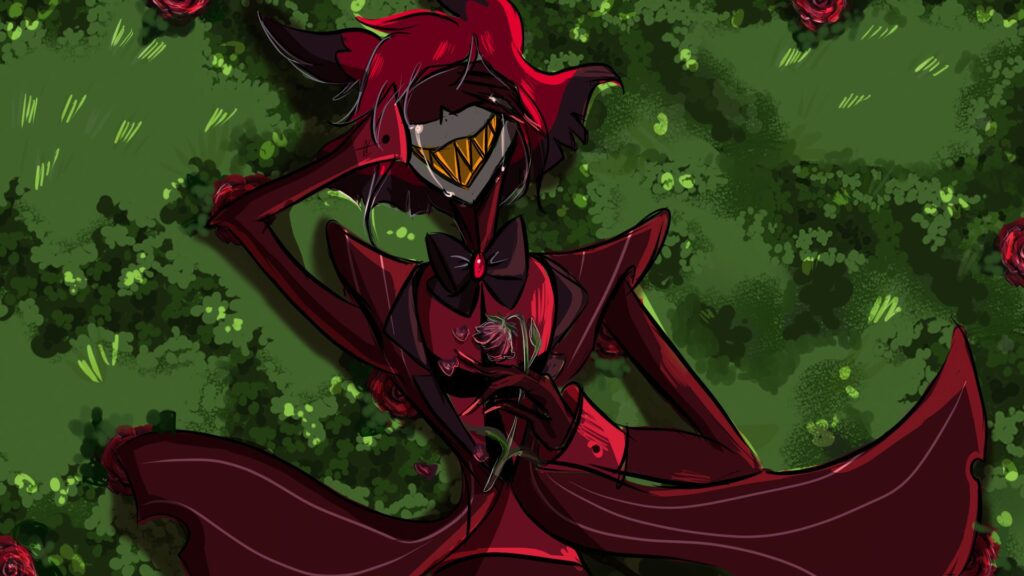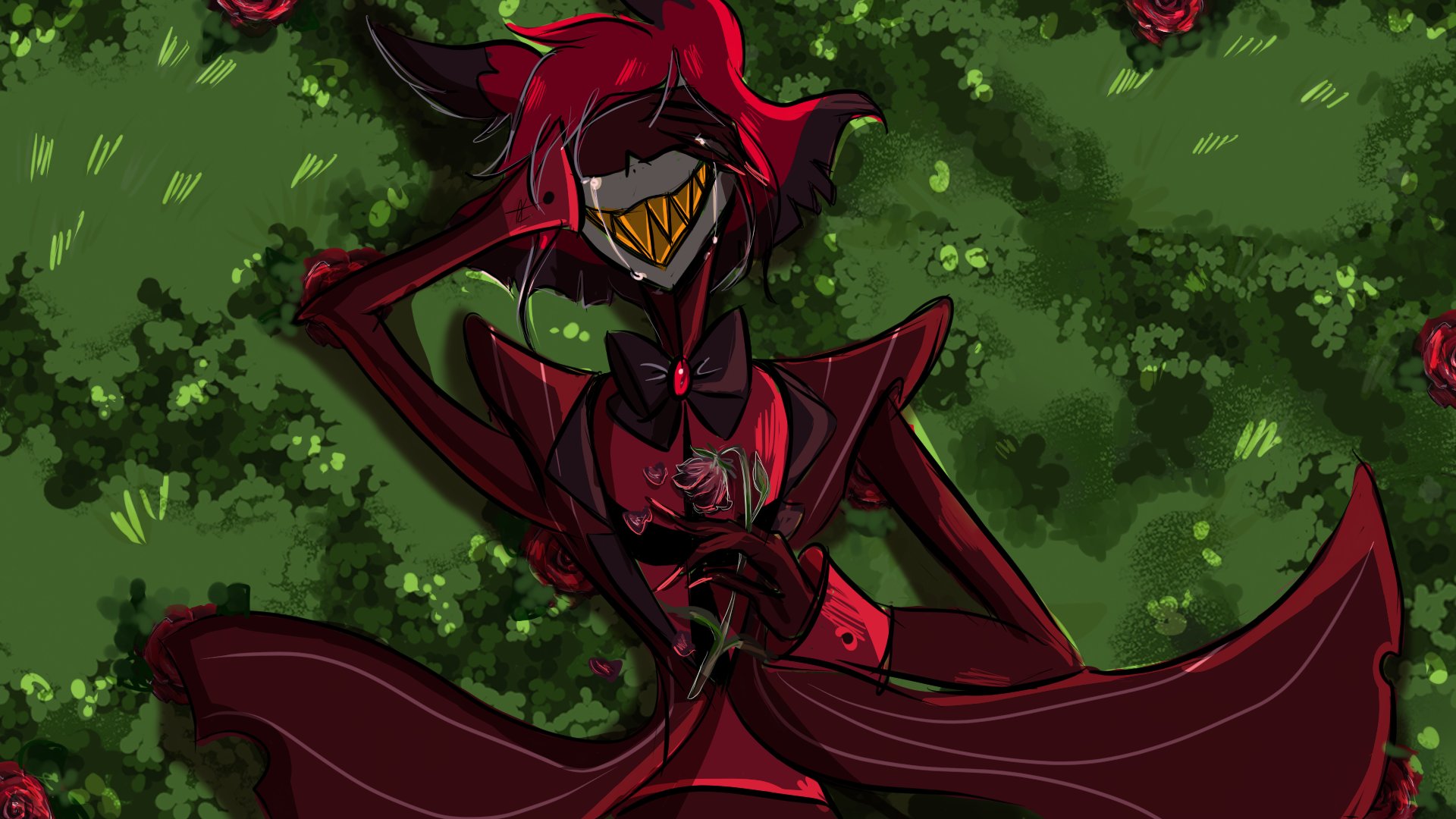
Is Alastor Real? Unraveling the Mystery Behind the Hazbin Hotel Character
The animated series Hazbin Hotel has captivated audiences with its vibrant characters and intriguing storylines. One character, in particular, has sparked considerable debate and curiosity: Alastor, the Radio Demon. But is Alastor real? This question delves into the realms of fiction, mythology, and the very nature of character creation. This article aims to explore the origins, inspirations, and cultural contexts surrounding Alastor, providing a comprehensive understanding of whether he exists beyond the screen.
The Fictional World of Hazbin Hotel
Hazbin Hotel, created by Vivienne Medrano (also known as VivziePop), is set in Hell and follows Charlie Morningstar’s ambitious goal of rehabilitating demons to reduce overpopulation. Alastor, a powerful and enigmatic demon, adds a layer of complexity and intrigue to the narrative. His charming demeanor, coupled with his immense power and sinister undertones, makes him a fan favorite. However, it’s crucial to remember that Hazbin Hotel is a work of fiction. Alastor, along with the other characters, exists within this fictional universe. Therefore, in a literal sense, Alastor is not real. He is a product of creative imagination and storytelling.
Alastor’s Character: Inspirations and Origins
While Alastor himself is not a real historical figure or entity, his character draws inspiration from various sources, including folklore, mythology, and historical figures. Understanding these influences can provide a deeper appreciation for the character and shed light on the question of his ‘reality’ in a broader context.
Mythological and Folklore Influences
Many characters in fiction are inspired by mythological figures or folklore. While Alastor isn’t a direct adaptation of a specific mythological being, certain aspects of his character resonate with archetypal figures found in various cultures. The concept of a powerful, charismatic entity with a dark side is a recurring theme in mythology. Demons, tricksters, and figures associated with the underworld often share similarities with Alastor’s persona. These elements contribute to the character’s depth and complexity, making him more relatable and intriguing to audiences. Alastor’s design and powers reflect these mythological undertones, enhancing his mystique.
Historical Inspirations
Vivienne Medrano has mentioned that Alastor’s character design and personality were partly inspired by radio personalities from the 1930s. This historical context is evident in Alastor’s vintage aesthetic, his use of radio technology, and his charming yet calculated demeanor. While not based on a specific historical figure, Alastor embodies the spirit of that era, blending it with supernatural elements to create a unique and memorable character. This blend of historical and fictional elements adds depth to Alastor’s persona, making him more than just a generic demon character.
The Radio Demon Persona
Alastor’s moniker, the “Radio Demon,” is significant. It ties him to the historical context of early radio broadcasting and its impact on society. In the 1930s, radio was a powerful medium for communication and entertainment. Alastor’s association with radio symbolizes his ability to influence and manipulate information, adding another layer to his character’s power and mystique. The Radio Demon persona highlights Alastor’s control over information and his ability to broadcast his influence far and wide within the Hazbin Hotel universe. The question of whether Alastor is real becomes less about literal existence and more about the symbolic power he represents.
The Psychological Impact of Fictional Characters
Even though Alastor is not a real person, fictional characters can have a significant impact on our emotions, thoughts, and behaviors. This psychological impact can blur the lines between fiction and reality, especially for dedicated fans. Understanding this phenomenon can help us appreciate the power of storytelling and the role of characters like Alastor in our lives.
Emotional Connection
Characters like Alastor evoke strong emotional responses in viewers. His complex personality, combining charm and menace, creates a sense of fascination and intrigue. Fans often develop emotional connections with characters, investing in their stories and empathizing with their struggles. This emotional investment can make the characters feel ‘real’ in a personal and subjective way. The emotional connection fans feel towards Alastor is a testament to the character’s well-crafted design and compelling narrative.
Identification and Role Models
Viewers may identify with certain aspects of Alastor’s character, such as his confidence, intelligence, or independence. While Alastor is not necessarily a role model due to his morally ambiguous nature, fans may admire certain qualities he possesses. This identification can influence their own behaviors and attitudes. The way fans perceive and interact with Alastor can reflect their own values and aspirations. Therefore, Alastor, while not real, can still play a role in shaping personal identities.
Social Interaction and Fandom
Fictional characters often serve as a basis for social interaction and community building. Fans of Hazbin Hotel, including Alastor enthusiasts, connect with each other through online forums, fan art, and cosplay. These interactions create a sense of belonging and shared identity. The collective enthusiasm for Alastor and other characters reinforces their ‘reality’ within the fan community. The social aspect of fandom helps to keep the character alive and relevant, even though he is not a real person.
The Concept of Reality in Fiction
The question of whether Alastor is real also touches on the broader concept of reality in fiction. How do we define ‘real’ when discussing fictional characters and worlds? Exploring this philosophical question can provide a deeper understanding of the relationship between fiction and reality.
Suspension of Disbelief
One of the key elements of enjoying fiction is the suspension of disbelief – the willingness to accept the fictional world and its characters as real, even though we know they are not. This suspension of disbelief allows us to become immersed in the story and experience the emotions and adventures of the characters. Without this willingness to suspend disbelief, it would be difficult to engage with any work of fiction. The more compelling the story and characters, the easier it is to suspend disbelief. Alastor’s captivating personality helps viewers to immerse themselves in the world of Hazbin Hotel.
Internal Consistency
A well-constructed fictional world has internal consistency – a set of rules and logic that govern the events and characters within that world. If a fictional world is internally consistent, it feels more ‘real’ and believable. Hazbin Hotel, despite its fantastical elements, maintains a degree of internal consistency that makes the characters and their actions feel plausible within the context of the story. This internal consistency contributes to the overall sense of reality within the fictional world. Alastor’s actions and motivations are consistent with his established character traits, further enhancing his believability within the Hazbin Hotel universe.
The Power of Imagination
Ultimately, the ‘reality’ of a fictional character like Alastor lies in the power of imagination. Characters come to life through the creative efforts of writers, artists, and voice actors, and they continue to exist in the minds of the audience. The more vivid and compelling the character, the more ‘real’ they become in our imaginations. Alastor’s enduring popularity is a testament to the power of imagination and the ability of fictional characters to resonate with audiences on a deep level. The question of whether Alastor is real ultimately depends on how we define reality and the role of imagination in shaping our perceptions.
Is Alastor Real: A Definitive Answer
So, is Alastor real? In the literal sense, no. Alastor is a fictional character created for the animated series Hazbin Hotel. He exists within the confines of that fictional world and is a product of the imagination. However, in a broader sense, Alastor is ‘real’ in terms of his impact on viewers, his cultural significance, and his representation of certain archetypes and themes. He embodies the creativity and storytelling prowess that make fiction so compelling and meaningful. The character of Alastor resonates with fans due to his complex personality and the intriguing world he inhabits. While he is not a real person, his influence and the discussions he sparks are very real. The debate around whether Alastor is real highlights the power of fiction to captivate and engage audiences. Therefore, while Alastor is not real in a physical sense, his impact and significance are undeniably real.
Ultimately, the question “is Alastor real?” invites us to consider the power of storytelling, the nature of reality, and the enduring impact of fictional characters on our lives. Alastor, the Radio Demon, may not walk among us, but his presence is felt in the hearts and minds of Hazbin Hotel fans around the world. [See also: Hazbin Hotel Character Analysis] [See also: The Popularity of Animated Series] [See also: Understanding Fictional Characters]

